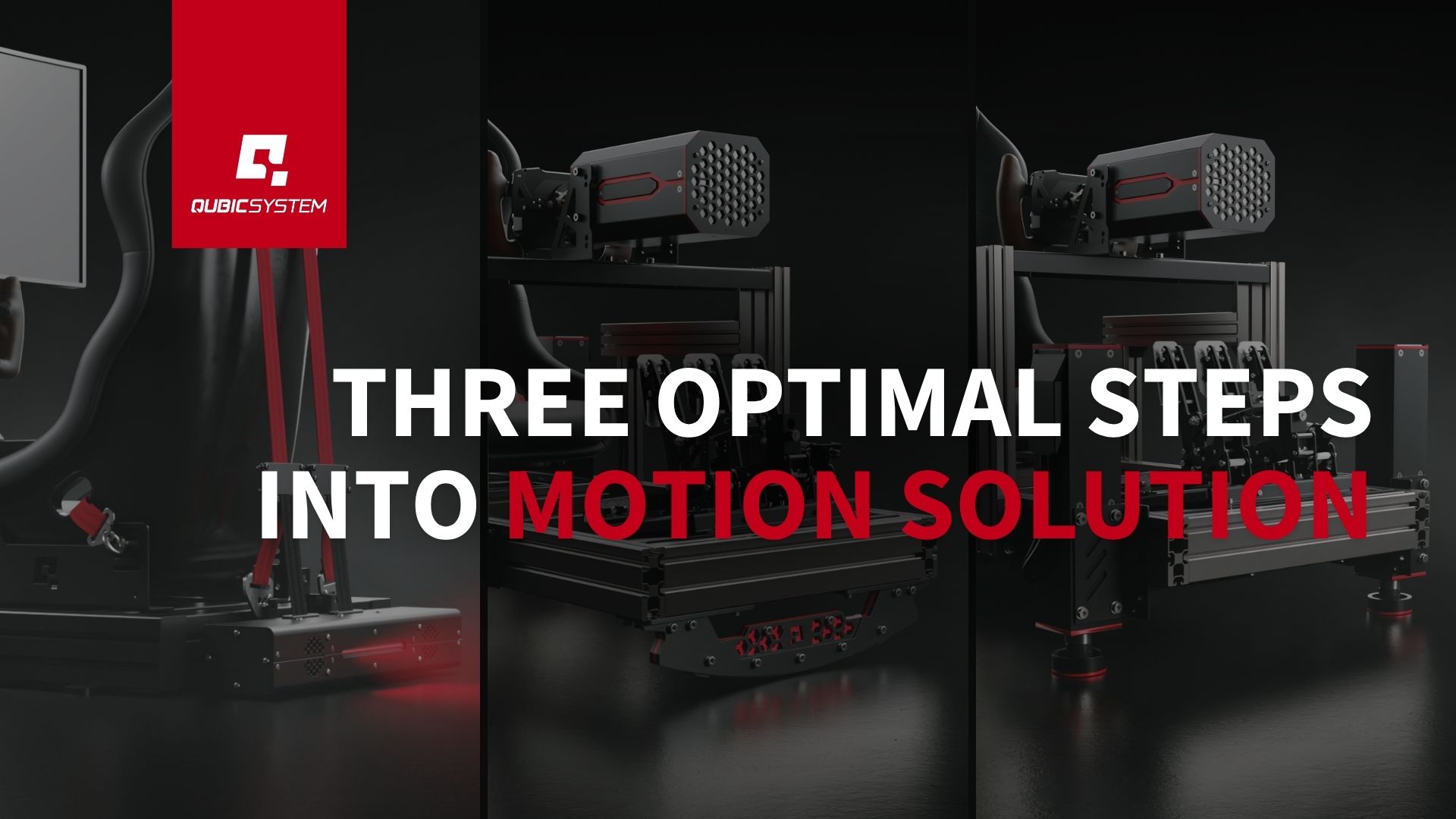Three optimal steps into motion solution
Step 1: Begin with the QS-BT1 belt tensioner
The QS-BT1 belt tensioner is the perfect first step. It does not move the cockpit, but simulates the sensation of g-forces by dynamically tightening and loosening the seat belts.
In racing, this brings braking zones to life. Pressing the brakes tightens the seat belts around your chest, just like in a real GT3 car. During acceleration, the seat belts loosen, and cornering introduces a lateral pull that sharpens your awareness of grip and balance.
In flight simulators, the QS-BT1 generates lift and drag signals. Pull back to take off, and the seat belts press you down. Encounter turbulence during the flight, and you will feel sudden jolts on your shoulders. These subtle signals make stall warnings or steep bank angles more convincing than visual cues alone.
Importantly, the seat belt tensioner provides a better overall immersive experience than alternative solutions, such as active pedals in the same price range. While active pedals only act on the feet, the QS-BT1 engages the entire upper body – making every lap or flight more physical. You will not have any use for an active pedal in a flight simulator, so the QS-BT1 is more universal.
Step 2: QS-210 + QS-PIVOT
enter to “2.5DOF” motion
The next step adds motion with the QS-210 linear actuator set and the QS-PIVOT system, unlocking the “2.5 DOF” configuration when pivot is mounted at the front of the rig. The cockpit tilts forward and backward for pitch and sideways for roll, with a “heave” motion pattern combined from the pitch axis.
In racing simulators, this transforms the driving experience. The cockpit dives under braking, leans back under throttle, and leans in corners. Curbs now feel like distinct jolts, and elevation changes finally matter. According to community feedback, this system often recreates 70-80% of the experience of a full 3DOF setup – at half the price.
In flight simulators, the “2.5DOF” setup provides authentic roll turns and pitch dynamics. Takeoffs feel more natural as the aircraft’s nose lifts, and turbulence creates realistic, short “bounces”. When paired with the QS-BT1, roll and seatbelt inputs synchronize perfectly, combining constant body pressure with plane orientation.
The compact design also makes it a practical solution. The QS-210 actuators respond quickly and precisely, providing precise inputs that are crucial for both racing consistency and flight training.
Step 3: Expand to full 3DOF with additional QS-210 actuator set
The final step completes the motion setup by adding two more actuators (1x QS-210 set). With four actuators in total, the rig achieves true 3DOF: pitch, roll, and full heave.
For drivers, this means the track surface finally comes to life. Every bump, rise, and slope is transmitted through the cockpit. Braking dives and accelerations are more noticeable. The system now communicates both constant roll and vertical impacts, providing a clearer picture of the car’s grip and balance.
For pilots, this improvement is groundbreaking. Takeoffs climb, landings rumble, and turbulence shakes the entire cockpit. Practicing alignment on approach becomes intuitive, as the body feels the aircraft descend. Instructors and enthusiasts describe 3DOF as the optimal solution – providing essential feedback from real flight.
This configuration avoids the compromises of cheap 6DOF rigs. Instead of spreading limited actuator power across six axes, it concentrates strength on three critical ones – pitch, roll, and heave. The result is speed, accuracy, and haptic fidelity that support both serious training and hobbyist fun.
Why this path makes sense
A cheap 6DOF system may seem tempting, but in reality the performance of such budget solutions is usually poor. Such platforms often fall short in key areas: actuator speed, latency, and fidelity. Bigger motion is not necessarily better – timing and accuracy matter more than the actual stroke.
- The three-step path avoids these traps. Each stage adds lasting value:QS-BT1 provides essential g-force feedback for the body.
- QS-PIVOT with QS-210 actuators introduces tilt and partial heave, covering up to 80% of 3DOF sensations.
- Full 3DOF (thanks to extra QS-210 actuator set) delivers complete vertical immersion with professional-grade cues.
Every step is modular, so the simulator grows naturally with the user’s goals. Also notice that QS-BT1 belt tensioner and QS-210 actuators are able to generate special vibrations (haptics) during movement, providing significantly more information about the vehicle’s behavior when using the simulator. So it practically eliminates the need for bass shakers or similar devices to generate vibrations.
Explore the Qubic System community by joining our Discord server!
Connect with fellow enthusiasts, share experiences, and stay updated on the latest developments. Whether you’re a seasoned user or just curious about our innovations, our Discord is the perfect place to engage with like-minded individuals. Join us for discussions, exclusive updates, and a vibrant community experience. See you on Qubic System’s Discord!





